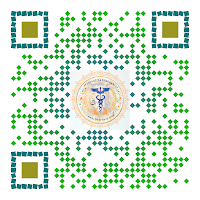.jpg)
Celiac
disease (CD) is an immune-mediated, multisystem disorder that affects genetically
susceptible individuals who are exposed to gluten-containing grains such as
wheat, barley, and rye.
Also
known as gluten-sensitive enteropathy, Celiac disease is a condition in which
the body responds
to gluten with an inappropriate immune response causing small
intestinal inflammation and damage.
CD
can be associated with different autoimmune and idiopathic diseases, including type
1 diabetes
mellitus, Hashimoto’s thyroiditis, selective IgA deficiency,
alopecia areata, Addison’s disease, connective
tissue diseases (mainly
Sjogren’s syndrome), chromosomal diseases (Down, Turner, and William’s
syndromes),
neurological diseases (cerebellar ataxia, peripheral neuropathy, epilepsy with
and without
occipital calcifications), hepatic autoimmune diseases (primary
biliary cholangitis, autoimmune hepatitis,
primary sclerosing cholangitis), and
idiopathic dilated cardiomyopathy.
Extraintestinal
symptoms are common and may include:
- Anemia
due to defective absorption of vitamin B12, folate or iron
- Coagulopathy
due to impaired absorption of vitamin K
- Osteoporosis
- Neurological
symptoms like muscle weakness, paresthesias, seizures and ataxia
Dermatitis
herpetiformis is an extraintestinal manifestation that is pathognomonic for
celiac disease.
Because the rash is an immunologic response to gluten, it is
sometimes referred to as celiac disease of the
skin. This papulovesicular rash
is extremely pruritic and found on extensor surfaces, such as the elbows,
knees, buttocks, and scalp.
The
two antibodies measured are anti-tissue transglutaminase antibodies (by
enzyme-linked
immunosorbent assay or ELISA measured numerically) and
anti-endomysial antibodies.
Esophagogastroduodenoscopy
with small bowel biopsy is recommended to confirm the diagnosis in most
patients, including those with a negative serologic test for whom clinical
suspicion of celiac disease
persists.
Genetic
testing for human leukocyte antigen alleles DQ2 or DQ8 may be performed in
select cases.
A
gluten-free diet for life is the primary treatment


.%20They%20are%20nonblanching%20and%20nonpalpable.%20They%20typically%20occ.jpg)




.jpg)









